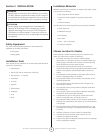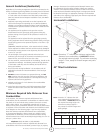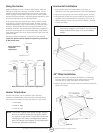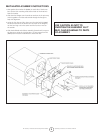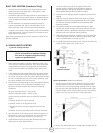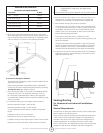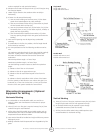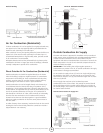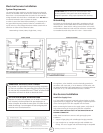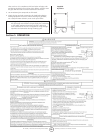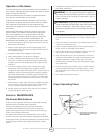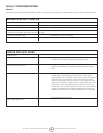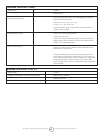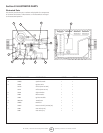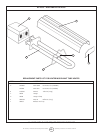
16
Mr. Heater | Gas-Fired Low-Intensity Infrared Heater Operating Instructions and Owner’s Manual
Non-Pressurized Outside Air Supply Duct
Outside Combustion Air Supply
The MHT tube heater is approved for installation with an outside air
supply system. Some compounds such as halogenated hydrocarbons
or other corrosive chemicals in the air can be drawn into the
equipment and cause an accelerated rate of corrosion of some of the
heater components. The use of such chemical compounds near the
enclosure should be avoided.
IMPORTANT: If the building has a slight negative pressure or
contaminants are present in the air, an outside combustion air supply
to the heaters is strongly recommended.
For an outside air supply a three (3") inch O.D. single wall pipe may
be attached to the heater. The duct may be up to twenty ve (25')
feet maximum length or two (2') feet minimum length with no more
than two (2) elbows.
The air supply duct may have to be insulated to prevent
condensation on the outer surface. The outside air terminal should
be securely fastened to the outside wall by drilling four (4) holes in
the outside ange; wood screws or bolts and expansion sleeves may
be used to fasten terminal.
VERTICAL THROUGH THE ROOF
Intake Vent
3" Starting Collar
¼” per ft.
downwards
6" Min.
3" Dia.
Single-Wall Pipe
Flashing
3' Min.
Vent Cap
(Leslie VersaCap)
Vertical Venting
Air For Combustion (Residential)
If indoor combustion air is to be supplied for a tightly enclosed area,
one square inch of free area opening shall be provided below the
heater for each 1,000 Btu/hr of heater input.
When outside air is used, the opening below the heater shall be one
square inch of free area for each 4,000 Btu/hr of heater input. In
contaminated atmospheres or high humidity areas, optional outside
air for combustion is recommended.
Adequate clearances around the perforated fresh air plate must be
maintained at all times. In larger open areas of buildings, inltration
normally is adequate to provide air for combustion.
Direct Outside Air For Combustion (Residential)
Outside combustion air should be supplied directly to the heater
when the building is subject to negative pressure or contaminants
are present in the building air. These contaminates include paints,
solvents, corrosive vapors or any other foreign particles that may
cause damage to the heater or result in poor combustion.
Outside combustion air can be brought directly to the heater by a
3 inch diameter duct less than 25 feet long or equivalent. This is
attached to a 3 inch starting collar that is tted on inlet side of the
control cabinet. An approved vent cap must be placed directly to the
end of the outside combustion air inlet pipe. The combustion air
inlet should be a minimum of 3 feet, either vertically or horizontally,
from the ue vent termination. The air intake terminal must be
located not less than one foot above grade. It is good installation
practice to supply combustion air from the same pressure zone as
the vent outlet.
In colder climates, where necessary, insulate the fresh air duct. Avoid
locating the fresh air duct directly above the control box. Provide a
capped cleanout T as necessary.



